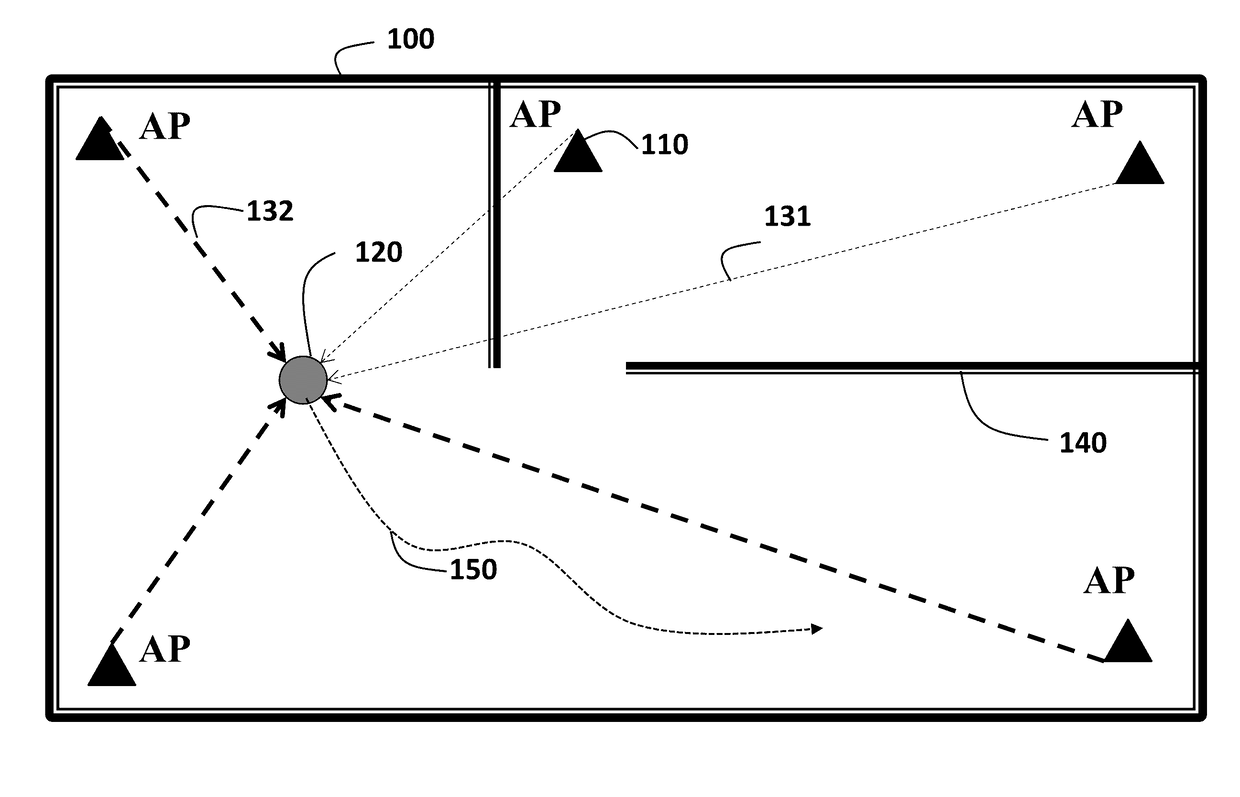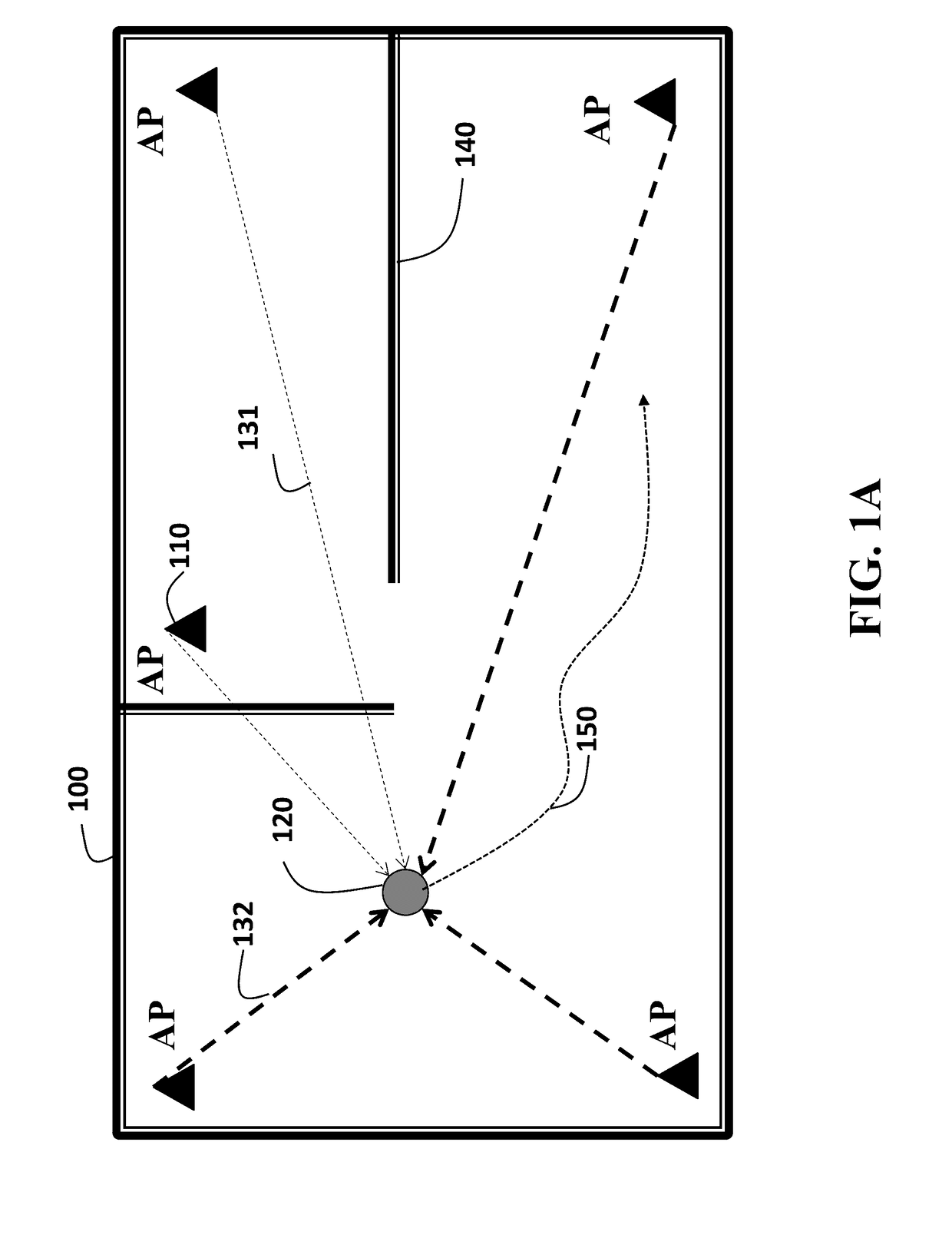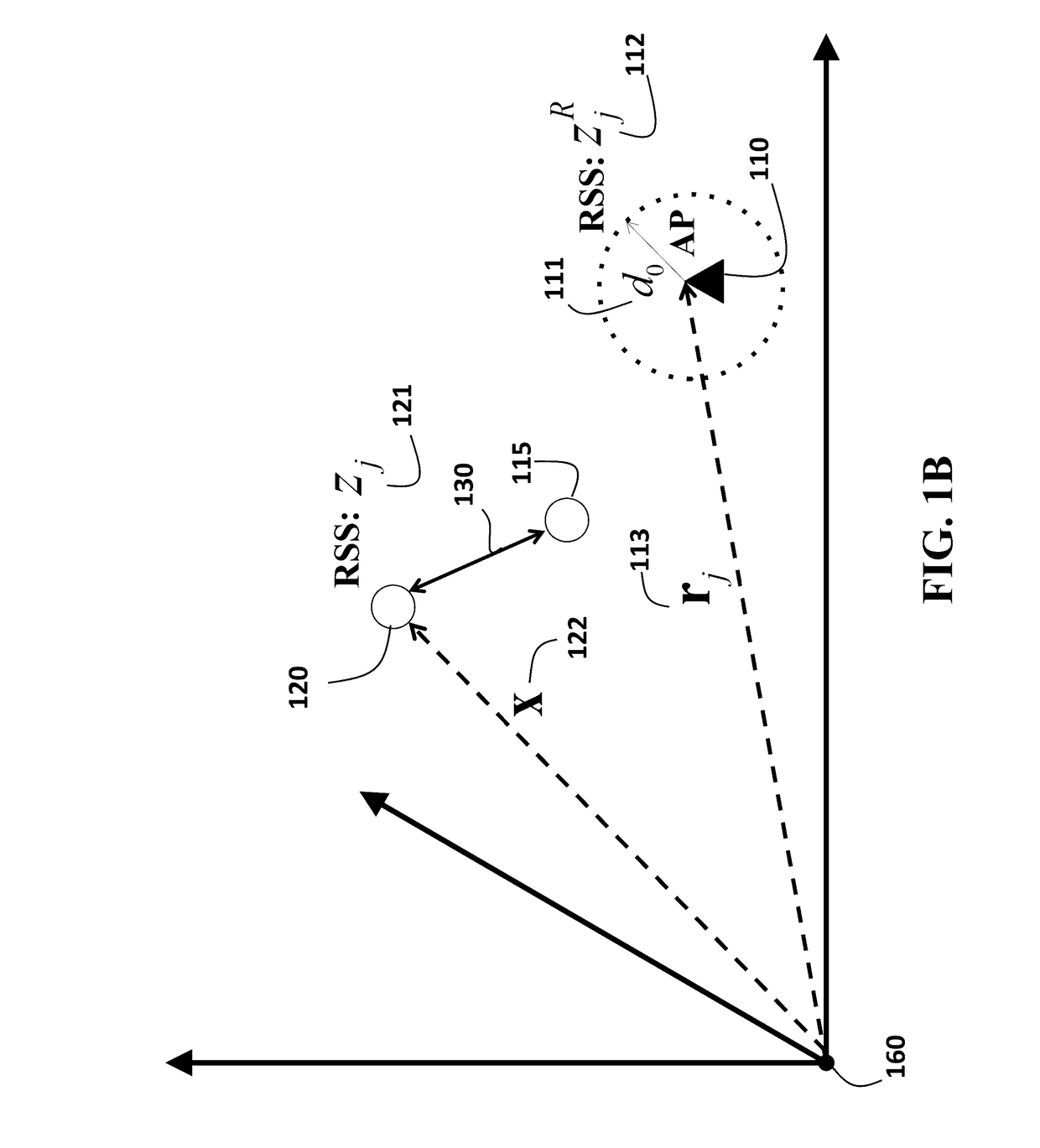Device Localization using RSS Based Path Loss Exponent Estimation
- Summary
- Abstract
- Description
- Claims
- Application Information
AI Technical Summary
Benefits of technology
Problems solved by technology
Method used
Image
Examples
Embodiment Construction
[0024]FIG. 1A shows a schematic of localization problem using received signal strength (RSS) measurement according to some embodiments of the invention that determine location of a device 120 in an enclosed environment 100 using access points (APs) 110. The enclosed environment can be, for example, interior of a home, building, underground, even an urban canyon, etc., with multiple obstacles such as walls 140, furnishings, etc. The device can be, for example, a mobile robot, smart phone, portable computer, etc. In one embodiment the device moves along an unknown path 150. After the location of the device is determined, the device can be controlled according to its current location.
[0025]Some embodiments of an invention provide a system and a method for localization of a device by measuring received signal strength (RSS) levels of signals transmitted by a set of access points (APs) arranged in an enclosed environment. The method uses a path loss model for the RSS level. The log-dista...
PUM
 Login to View More
Login to View More Abstract
Description
Claims
Application Information
 Login to View More
Login to View More - R&D
- Intellectual Property
- Life Sciences
- Materials
- Tech Scout
- Unparalleled Data Quality
- Higher Quality Content
- 60% Fewer Hallucinations
Browse by: Latest US Patents, China's latest patents, Technical Efficacy Thesaurus, Application Domain, Technology Topic, Popular Technical Reports.
© 2025 PatSnap. All rights reserved.Legal|Privacy policy|Modern Slavery Act Transparency Statement|Sitemap|About US| Contact US: help@patsnap.com



